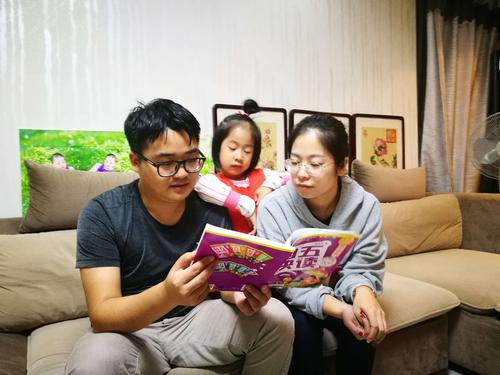一个人的舞台的英文的舞台翻译的舞台英语怎-中国进入3g时代
2023年4月1日发(作者:韩国爱情电影)
目 录
第1章 第二语言学习与语言教学
1.1 复习笔记
1.2 课后习题详解
第2章 语法学习
2.1 复习笔记
2.2 课后习题详解
第3章 学习语言的构成成分
3.1 复习笔记
3.2 课后习题详解
第4章 使用第二语言
4.1 复习笔记
4.2 课后习题详解
第5章 学习者个人因素
5.1 复习笔记
5.2 课后习题详解
第6章 课堂上的语言和语言输入
6.1 复习笔记
6.2 课后习题详解
第7章 多语社会和语言教学目的
7.1 复习笔记
7.2 课后习题详解
第8章 第二语言学习的一般模式
8.1 复习笔记
8.2 课后习题详解
第9章 第二语言学习和语言教学法
9.1 复习笔记
9.2 课后习题详解
第1章 第二语言学习与语言教学
1.1 复习笔记
本章要点:
language第二语言
-competence多语能力
3.L2learningresearch第二语言学习的研究
本章考点:
1.第二语言学习的研究对语言教学的贡献
(1)学生对学习的贡献:性格和思想、学习方法;
(2)教学方法和技巧:教学方法体现出第二语言学习观,教学技巧是否
有效与许多因素有关;
(3)语言教学的目标:总的教育目标(帮助人更好地思考,欣赏文学,
提高学习者的自我意识和成熟度,了解其他文化和民族,与外国人交
流),社会和个人的需要,多角度认识课堂。
2.第二语言学习的研究的独立性
(1)重要概念:第二语言,多语能力;
(2)独立性:语言教学,第一语言的习得和迁移,独立的语言系统;
(3)技术分析:背景假设,语言输入,活动。
本章内容索引:
Ⅰ.ContributionsofL2learningresearch
dents’contributiontolearning
ngmethodsandtechniques
lsoflanguageteaching
Ⅱ.TheindependenceofL2learningresearch
geteaching
2.L1acquisition
eroftheL1
ndentlanguagesystems
queanalysis
Ⅰ.ContributionsofL2learningresearch(第二语言学习的研究的贡献)
dents’contributiontolearning(学生对学习的贡献)
L2learnershavefullyformedpersonalitiesandmindswhentheystart
learningtheL2,andthesehaveprofoundeffectsontheirwaysoflearning
ferentwaysinwhichstudentstackle
learningalsoaffecttheirsuccess.
开始学习第二语言的时候,第二语言学习者有自己的性格和思想,这对
他们的学习方式和学习效果有重要影响。学生的学习方法也会影响他们
的学习效果。
ngmethodsandtechniques(教学方法和技巧)
TeachingmethodsusuallyincorporateaviewofL2learning,whether
implicitlyorexplicitly.
Thereasonswhyateachingtechniqueworksordoesnotworkdependon
manyfactors.
教学方法能体现或暗含第二语言学习观。
教学手段是否有效与许多因素有关。
lsoflanguageteaching(语言教学的目标)
Thereasonswhythesecondlanguageisbeingtaughtdependuponoverall
mple,brain-trainingandlogicalthinking,
appreciationofseriousliterature,thestudent’sincreasedself-awareness,
appreciationofotherculturesandraces,communicationwithpeopleinother
countries.
Itisforthesocietyortheindividualstudenttodecidethegoalsoflanguage
dsofsocietyandoftheindividualshouldbebalanced.
Teachersalsoneedtoseetheclassroomfrommanyangles,notjustfromthat
ofL2learningresearch.
总的教育目标涵盖了第二语言的教学。比如,提高思维能力,欣赏文
学,提高学习者的自我意识,了解其他文化和民族,与外国人交流。
语言教学的目标是由社会或个人所决定的。要权衡社会和个人的需要。
教师也要多角度地认识课堂,而不只是从研究第二语言学习的角度。
Ⅱ.TheindependenceofL2learningresearch(第二语言学习的研究的独
立性)
Secondlanguageisalanguageacquiredbyapersoninadditiontohismother
tongue.
Multi-competenceistheknowledgeofmorethanonelanguageinthesame
mindtheindependentlanguageassumption:thelanguageoftheL2learner
consideredasasystemoflanguageinitsownrightratherthanasadefective
versionofthetargetlanguage(sometimescalled‘interlanguage’).
第二语言是在母语之外学习的一门语言。
多语能力是指具备一门以上语言的知识;第二语言学习者的语言是一个
独立的语言系统(有时也称之为“中介语”),而不是目的语的变体。
geteaching(语言教学)
ThereisnoeasylinkbetweenL2learningresearchandlanguageteaching
languageacquisitionresearchdoesnotprovideasolution
thatcaninstantlybeappliedtothecontemporaryclassroom.
第二语言学习的研究和语言教学方法并非直接相关。第二语言习得的研
究没有给课堂教学提供一个可以直接采用的方法。
2.L1acquisition(第一语言的习得)
language
learnersinfactaredifferentfromchildrenlearningafirstlanguagesince
thereisalreadyonelanguagepresentintheirminds.
第二语言的学习与第一语言的习得不一定相同。第二语言学习者和学习
第一语言的孩子不同,因为第二语言学习者的头脑中已经有了一门语
言。
eroftheL1(第一语言的迁移)
wofL2learningsees
itscrucialelementasthetransferofaspectsoftheL1languageontotheL2.
Buttheimportanceofsuchtransferremainstobeestablishedthrough
properlybalancedresearch.
第二语言的学习不只是第一语言的迁移。有观点认为第一语言的迁移是
影响第二语言学习的重要因素,但迁移的重要性有待证实。
ndentlanguagesystems(独立的语言系统)
rsarenot
willfullydistortingthenativesystembutareinventingasystemoftheirown.
学习者在每一个阶段都有自己的语言系统。学习者不是有意改变本族语
的体系,而是创造自己的语言系统。
queanalysis(技术分析)
(1)Thebackgroundassumptions
alsituation(equipment,groupsize,teacherresources)
dents(age,motivation)
cher(teachingstyle,training,etc.)
ssumptionsbyteacherandstudents(goalsofteaching,classroom
expectations)
(2)Languageinput
h;
rseorfragments;
ticornon-authentic;
eoftheteacher’slanguage.
(3)Activities
ills(listening,speaking,reading,writing);
icationandinteraction;
nallyandcognitively;
ngstrategies.
(1)背景假设
A.物理条件(设备,团体大小,师资)
B.学生(年龄,动机)
C.老师(教学风格,训练等)
D.师生的共同假设(教学目标,课堂期望)
(2)语言输入
A.多少
B.语篇还是语段
C.真实还是非真实
D.教师语言的角色
(3)活动
A.四项技能(听,说,读,写)
B.交流和互动
C.情感和认知
D.学习策略
1.2 课后习题详解
Discussiontopics
youthinkisgoingoninastudent’sheadwhentheyaredoing,
say,afill-inexercise?Haveyouevercheckedifthisisreallythecase?
waysdoyouthinktextbooksareagoodsourceofinformation
aboutwhatisgoingoninaclassroom,andinwhatwaysnot?
studentssharethelanguageteachinggoalsyouarepracticingor
doyouhavetopersuadethemthattheyareright?Doyouhavearightto
differfromthem?
oubelieveintheteachingmethodyouuse?Whatevidencedo
youhaveforitssuccess?
hinktherearemoresimilaritiesordissimilaritiesbetweenlearning
afirstandasecondlanguage?
tellthefirstlanguageofL2studentsfromtheirspeechalone?
Howaboutinwriting?
ouldanL2speakeraimatifnotthemodelofthenativespeaker?
ctorsinateachingtechniquedoyouthinkaremostimportant?
参考答案
Discussiontopics
thelanguagesystemisactiveinastudent’sheadwhentheyare
lktoastudentwhen
theyaredoinganexercise,theycantalkback.
oksareagoodsourceofinformationaboutwhatisgoingonina
oksare
notagoodsourceofinformationaboutwhatisgoingoninaclassroom
becausetheycannottellushowthestudentsarelearning.
ve
theirownpreferencesaboutwhattheywanttolearn.
veintheteachingmethodIusebecauseithasbeenprovedtobe
dentsinourclasshaveahighinterest
inlanguagelearninganddowellinlanguagetests.
therearemoredissimilaritiesthansimilaritiesbetweenlearninga
elearnersarelearningasecond
language,kes
secondlanguagelearningdifferentfromfirstlanguagelearning.
writing,sometimesIcantellthefirstlanguageofL2students.
2speakershouldaimateffectivecommunicationwithotherpeoplein
thesecondlanguage,ifnotthemodelofthenativespeaker.
theimplicationsonlanguagelearningandlanguageprocessingare
mostimportantinateachingtechnique.
第2章 语法学习
2.1 复习笔记
本章要点:
fgrammar语法的分类
tidimensionalmodel多维模型
plesandparametersgrammar原则和参数语法
本章考点:
1.语法的分类:规定性语法,传统语法,结构语法;
2.具体描述语法:词素,多维模型,关系从句,原则和参数语法;
3.第二语言语法的教学。
本章内容索引:
Ⅰ.TypesofGrammar
iptivegrammar
ionalgrammar
uralgrammar
Ⅱ.DescriptionsofGrammar
ticalmorphemes
tidimensionalmodel
veclauses
plesandparametersgrammar
Ⅲ.L2teachingofgrammar
Ⅰ.TypesofGrammar(语法的分类)
iptivegrammar(规定性语法)
Prescriptivegrammarisgrammarthat‘prescribes’
peofgrammarisallbutirrelevantto
thelanguageteachingclassroom.
规定性语法规定人们应该说什么。它是教材上的语法规则。规定性语法
与课堂语言教学几乎无关。
ionalgrammar(传统语法)
Traditionalgrammaris‘school’grammarconcernedwithlabellingsentences
ingsentencesmeanslabellingthepartswiththeir
namesandgivingrulesthatexplaininwordshowtheymaybecombined.
Somelanguageteachingusesformsofgrammarthatresembleasophisticated
instreamtextbooksoftenrelyonthe
studentsknowingtermsfromtraditionalgrammar.
传统语法用词性标注句子,通常出现在学校教学中。分析句子意味着将
词分类,并给出词语搭配的规则。有的语言教学用语法形式来表征传统
语法的复杂形式。即使是主流教材也常常依赖学生对传统语法术语的了
解。
uralgrammar(结构语法)
Structuralgrammarisgrammarconcernedwithhowwordsgointophrases,
phrasesintosentencesgrammatical(linguistic)competence:thenative
speaker’sedontheconceptofphrase
structureanddescribesthesentencebyfittingthepartstogetherinmoreand
morecomplicatedways.
结构语法是指组词、造句、语法能力及本族语者的语言知识。它基于短
语结构的概念,认为句子是短语按照越来越复杂的方式组合而成。
Ⅱ.DescriptionsofGrammar(具体描述语法)
ticalmorphemes(词素)
rdsconsistofasingle
‘book’.Somecanhavemorphemesaddedtoshowtheir
‘books’.Otherscanbesplitupinto
‘supermarket’.
词素是最小的语法单位。有的单词由一个词素构成,例如“book”。有的
单词通过增加词素来表示语法特征,例如“books”。还有的单词可以分
成几个词素,例如“supermarket”。
tidimensionalmodel(多维模型)
Thecoreideaofthemultidimensionalmodelisthatsomesentencesare
rnerstartswiththe
simpleststructurewithoutmovement;thengraduallylearnshowtomovethe
resixstages
inthisprocess:
(1)Produceonlyonewordatatime.
(2)Acquirethemosttypicalwordorderofthelanguage.
(3)Concentratesonmovingthingstothebeginningofthesentence.
(4)Discoverhowtheprepositioncanbeseparatedfromitsphrase.
(5)Workwithquestion-wordquestions.
(6)Acquiretheorderwithinthesubordinateclause.
However,themultidimensionalmodelclaimsthatthereisvariationbetween
arnersmasterallthefeaturesofa
particularstage,someonlyafew.
多维模型的中心思想是:有些句子是通过移动句内成分形成的。学习者
首先学习最简单的句子结构,然后慢慢学习怎样移动句子成分,构成新
的句子。这个过程可以分为六个阶段:
(1)一次说一个词;
(2)掌握最典型的词序;
(3)学习句首成分;
(4)掌握介词短语的拆分;
(5)学习疑问句;
(6)学习从句的句内语序。
多维模型还认为,每个学习者的学习阶段不同。有的学习者在某个阶段
能掌握所有句型,有的学习者只能掌握一部分。
veclauses(关系从句)
resixtypesof
relativeclause:subject-linkedclause,object-linkedclause,indirectobject-
linkedclause,oblique-caseclause,possessive-linkedclause,objectof
comparison-linkedclause.
关系从句是许多语言共同的特征。关系从句主要有六种:主语从句,宾
语从句,间接宾语从句,间接从句,物主从句,比较从句。
plesandparametersgrammar(原则和参数语法)
TheUniversalGrammartheorytriestoseewhathumanlanguageshavein
salGrammar(UG)seestheknowledgeofgrammarinthe
mindashavingtwocomponents:‘principles’thatalllanguageshavein
commonand‘parameters’onwhichtheyvary.
Thistheorygivessomeimplicationonsecondlanguagelearning:
(1)L2learnersdonotneedtolearnprinciples.
(2)L2learnersneedtoacquirenewparametersettingsforparameters.
(3)Alllearnerscanbelookedatwithinthesameoverallframeworkof
grammar.
(4)
multi-competence.
普遍语法理论试图找到人类语言的共性。普遍语法认为,人脑中的语法
知识有两种成分:所有语言共有的原则,不同语言各有的参数。
普遍语法理论对第二语言教学的启示是:
(1)第二语言学习者不需要学习原则;
(2)第二语言学习者需要学习参数;
(3)学习者在同一个语法框架中;
(4)第二语言学习者会掌握复杂的语言知识,形成多语能力。
Ⅲ.L2teachingofgrammar(第二语言语法的教学)
Therearefourextremepointsofviewontheteachingofgrammar:
(1)IgnorethepartsofgrammarthathaveaparticularL2learningsequence.
(2)FollowtheL2learningorderascloselyaspossibleintheteaching.
(3)TeachthelastthingsinanL2learningsequencefirst.
(4)Ignoregrammaraltogether.
关于第二语言语法的教学,有四种不同的观点:
(1)不讲解第二语言特有的语序;
(2)详细讲解第二语言的语序;
(3)先教第二语言最难的语法成分;
(4)完全不讲语法。
2.2 课后习题详解
Discussiontopics
ycurrenttextbookyouhavetohand,andlookatoneortwo
grammar-basedexercises;decidewhattypeofgrammaritemploysandhow
successfully?
pectsofgrammardoyoufeelstronglyabout?Forexample,what
thingsdoyoufeelpeopleshouldnotsay?Why?
evantisanyformofgrammartolanguageteachingtodaywithits
emphasisoncommunication?
ortantdoyouthinkthatgrammaticalmorphemesaretothe
student?Howmuchattentiondotheyreceiveinteaching?Howmuchshould
theyreceive?
earnersyouknowconformtothestagesofthemulti-dimensional
model?
houldonlyteachwhatastudentisreadytoreceive,howdoyou
establishwhatthestudentisactuallyreadyfor?
languageacquisitionresearchthinksthattheorderofacquisitionis
ortantdoyouthinkthatorderof
presentationistolanguageteaching?
conceiveofothertopicsthanrelativeclauseswhenitwouldbe
righttostartbyteachingthestudentsthemostdifficultormostcomplex
aspectratherthantheeasiestorsimplest?
ysofmakingotheraspectsofgrammarconsciouscanyouthink
of,say,pronunciation,intonation,orspeechfunctions?Wouldthisbeagood
idea?
参考答案
Discussiontopics
lishtextbooksforseniorhighschoolsemployprescriptive
achstudentswhatthelanguageshouldbe.
shouldnotsay
sentenceswithwrongwordorder,becausethemeaningofasentencedepends
muchonthewordorder.
hes
learnersthefunctionofwordsandsentences,ticularuseofwords
andsentencewithincertaincontexts.
ceive
tudentsdonotknowthe
grammaticalroleofwordswithinasentence,itwillbedifficultforthemto
acquiregrammaticalstructure.
arnersconformtothestagesofthemulti-dimensionalmodel,but
allyspeaking,Idonotconformtothestagesofthemulti-
edwiththelearningofsentencessuchas“Good
morning”and“Nicetomeetyou”.
ingtotheUniversalGrammartheory,alllearnerspossessprinciples
tudentisactuallyreadytolearn
theparticularparametersofthesecondlanguage.
thattheorderofpresentationisimportanttolanguageteaching,but
erofpresentationmayhavevariouseffects
ondifferentlearners,sincetheorderofacquisitiondiffersamongindividuals.
Teacherscansometimeschangetheorderofpresentationtomeettheneedsof
theminoritystudents,whichmeansanewchallengetothemajority.
eningcomprehension,itisrighttoteachthestudentstogetthemain
ideafirst,whichisthemostdifficultpart.
ofmakingpronunciationconsciousisbyremindingthecorrect
think
ofexplicitexplanationmakesL2learningquite
nothelplearnersmuchtoacquirethe
language,loptheabilityofusingthelanguage,althoughitcanadd
linguisticknowledge.
第3章 学习语言的构成成分
3.1 复习笔记
本章要点:
lestructure音节结构
tion语调
gcomponents意义成分
totypetheory原型理论
ctivediscourse交往性语篇
rsemoves会话转移
本章考点:
1.发音习得:音节结构,语音的教学,语调习得;
2.词汇习得:原型理论,第一语言对词汇的影响,词汇研究对教学的启
示;
3.口语语篇习得:交往性语篇,会话转移,母语迁移,礼貌原则。
本章内容索引:
Ⅰ.AcquistionofPronunciation
es
lestructure
tion
Ⅱ.AcquisitionofVocabulary
gcomponents
totypetheory
Ⅲ.AcquisitionofConversationaldiscourse
ctivediscourse
rsemoves
Ⅰ.AcquisitionofPronunciation(发音习得)
es(音素)
Phonemesarethesoundsofalanguagethataresystematicallydistinguished
fromeachother.
音素是语言的发音,它们具有系统性,而且相互区别。
lestructure(音节结构)
Syllablestructureisthewayinwhichconsonants(C)andvowels(V)maybe
lesaremadeupof
consonants(C)andofvowels(V).ThecompulsoryvowelintheEnglish
syllablemaybeprecededorfollowedbyoneormoreconsonants.
音节结构是一门语言中辅音和元音结合成音节的方式。音节由辅音和元
音构成。英语音节中的元音可以前接或后接辅音。
tion(语调)
Intonationistheriseandfallinthepitchofthevoiceduringspeech.
语调是说话时声音的升降。
Ⅱ.AcquisitionofVocabulary(词汇习得)
gcomponents(意义成分)
Meaningcomponentsareseparatecomponentsthatmakeupthemeaningofa
word.
意义成分是组成一个单词意思的多个成分。
totypetheory(原型理论)
ypetheory
suggeststhat,ratherthancomponentsofmeaning,thereisanidealof
rshaveacentralformofaconceptintheir
ypetheoryalsoclaims
thatchildrenfirstlearnwordsthatare‘basic’becausetheyreflectaspectsof
theworld.
原型理论由EleanorRosch等人于1977年提出。原型理论认为,在人的头
脑中有一个理想意义,而不是多个意义成分。说话人的头脑中有概念,
有所见所谈论事物的形式。原型理论还认为孩子起初学习的单词是基础
单词,因为这些单词是世界的反映。
Ⅲ.AcquisitionofConversationaldiscourse(口语语篇习得)
ctivediscourse(交往性语篇)
participantscaninterrupt,askformoreinformation,adaptwhattheyare
saying,ctivediscourse
usuallyoccursinspeechratherthanwriting.
交往性语篇是有问有答的自然语言。参与者可以打断,询问更多信息,
修正自己所说,但不能收回说过的话。交往性语篇通常出现在口语而不
是书面语中。
rsemov掌字组词语 es(会话转移)
Discoursemoveshereareusedforthespeaker’schoicesofwhattodointhe
conversation.
会话转移在这里是指说话人在对话中的会话选择。
3.2 课后习题详解
Discussiontopics
ldyoucarryoutintegratedpronunciationteaching?
pectsofpronunciationdoyouconsiderare(a)themostimportant
and(b)themostteachable?
essonorapagefromthetextbookyouaremostfamiliarwith:what
newwordsaretaughtandhow?
extentdoyouthinkthatwecanlearnthewordsofanother
languagewithoutlearninganewwayofthinkingtogowiththem?
outhinkthewordsforteachingshouldbeselectedand
sequenced?
thebalancebetweenstudents’needsforinteractiveversusnon-
interactivediscourseandforlistener-relatedversusinformation-related
discourse?Whatcantheteacherdoaboutthis?
extentdoestheteachingofconversationyouarefamiliarwith
concentrateonmovesand/orfunctions?Shouldit?
参考答案
Discussiontopics
gratedpronunciationteaching,pronunciationistaughtasan
rewaysofincluding
pronunciationworkwithinactivitiesprimarilydevotedtootheractivities,
eways,theteachercansimplycorrect
ldosuchincidentalcorrectiontocarryout
integratedpronunciationteaching.
syllablestructureisthemostimportantandteachableaspectof
lestructureiseasyforlearnerstounderstand,andvery
importantforthemtolearnpronunciation.
4ofNewCollegeEnglish1,thenewwordsarelistedwith
detailedEnglishinstructions,simpleChinesemeanings,andmorethanone
mple,theword“alcohol”isgivenwithtwo
meanings(stanceindrinksthatmakesyoudrunk;suchas
beer),andeachmeaningisgiventwosentencesasexamplestoshowhowthis
meaningofthewordisused.
elanguagesarecloselyrelated,wecanlearnthewordsofanother
rdsdo
sharealmostthesamemeaningsindifferentlanguages.
tfrequentitemscanbeselectedfirstasthewordsforteaching.A
familiarpreceptofvocabularyteachingisthatthemostfrequentlyused
thereare
researchchallengingthiswayofvocabularyteaching,Ithinkitisreasonable.
tsneedinteractivediscoursetolearntointeractiveinspeech,and
ed
listener-relatedtalktomaintainsocialrelationships,andinformation-related
eachercanincludebothkindsofdiscourse
andtalkinlanguageteaching.
chingofconversationinourEnglishclassusuallyconcentrateson
chermaystartaconversation,andthestudentsgivereplies.
Thisisaneffectivewaytoteachconversation.
第4章 使用第二语言
4.1 复习笔记
本章要点:
gmemory工作记忆
theory图式理论
g语法分析
itching语码转换
本章考点:
1.发音与短时记忆:语音回路;
2.阅读与长时记忆:图式理论;
3.听力理解的过程:语法分析;
4.交际策略:社会交往策略,解决心理问题策略;补偿策略。
本章内容索引:
Ⅰ.Short-termmemoryprocesses
-termmemory
gmemory
ivedeficit
Ⅱ.Long-termmemoryprocesses
theory
Ⅲ.Parsing
Ⅳ.Codeswitching
Ⅴ.Communicationstrategies
icationstrategies
satorystrategies
Ⅰ.Short-termmemoryprocesses(短时记忆)
-termmemory(短时记忆)
Short-termmemoryisthememoryusedforkeepinginformationforperiods
oftimeuptoafewseconds.
Digitspanisareflectionofthekeymemoryprocessesofshort-termmemory
(STM):theprocessingofinformationforperiodsoftimeuptoafewseconds.
InformationisstoredinSTMquitebriefly,andisthenusuallyforgotten.
L2learners’spansincreasedastheirEnglishimproved,yettheywerestill
slightlybelowthenativespeakernormalspanevenatadvancedstages.
短时记忆是记录信息时间长达几分钟的记忆。
数字长度是短时记忆能力的重要表征。短时记忆处理信息的时间长达几
分钟。信息很快存储在短时记忆中,然后通常被忘记。
第二语言学习者的数字长度随着英语水平的提高而变长,但即使处于高
级水平也比本族语者的稍低。
gmemory(工作记忆)
Workingmemoryisthememorysystemusedforholdingandmanipulating
informationwhilevariousmentaltasksarecarriedout.
Tokeeptheinformationinworkingmemoryfromfadingitmustbe
ntinualrepetitioniscalledthearticulatoryloop.
eakershavebetter
spansthanslowspeakers,everythingelsebeingequal.
Thearticulatorylooptheorysuggeststheprocessingoflanguageislinkedto
kingmemorytheoryseespronunciationas
ldthentakepronunciationmuchmore
seriously.
长时记忆也称工作记忆,是大脑活动时用来存储和加工信息的记忆系
统。
要让信息存储在工作记忆中而不被遗忘,就要不停地重复。这种不停的
重复被称为语音回路。记忆长度受语音速度的限制。在其他条件相同的
情况下,说得快的人比说得慢的记得多。
语音回路理论说明,语言的使用和发音的流利程度有关。工作记忆理论
认为语音对语言的使用很重要。因而我们应该更加重视语音。
ivedeficit(认知缺陷)
Cognitivedeficitisthelimitationsonprocessinginformationinasecond
ralthemindislessefficientinanL2,whateveritisdoing.
Memoryisalsorelatedtothelearner’thatachildhandles
informationinanL2isdifferentfromthatofanadult.
认知缺陷是指运用第二语言加工信息的局限。在运用第二语言的时候大
脑的效率一般没有那么高。
记忆也与学习者的年龄有关。小孩运用第二语言处理信息的方式和成年
人不同。
Ⅱ.Long-termmemoryprocesses(长时记忆)
theory(图式理论)
Schemaisthebackgroundknowledgeonwhichtheinterpretationofatext
theorysuggeststhatinteaching,itisimportanttobuildup
thelearners’backgroundknowledge.
图式是理解一个语篇所需的背景知识。图式理论表明,在教学中建立学
习者的背景知识很重要。
(脚本)
Ascriptis‘apredeterminedstereotypedsequenceofactionsthatdefinesa
well-knownsituation’.Somescriptsarevirtuallythesameforspeakersof
differentlanguages;er
therearesuchdifferencesbetweentwoscripts,theL2learnerswillbeata
loss.
脚本是一般情况下一种做事的顺序。有的脚本在不同语言的说话者之间
几乎是一样的,而另一些脚本在不同国家之间是不同的。当两个脚本之
间有不同时,第二语言学习者就会感到迷惑。
Ⅲ.Parsing(语法分析)
Parsingistheprocessthroughwhichthemindworksoutthegrammatical
structureandmeaningofthesentence.
Theprocessofparsingcanbeeither‘bottom-up’or‘top-down’.‘Bottom-up’
meansstartingfromthesmallestpartsandbuildingthesentenceupinour
mindsbitbybit,puttingthesoundsintowords,thewordsintophrases,the
phrasesintoawholesentence.‘Top-down’parsing,ontheotherhand,means
startingfromthewholesentenceandbreakingitdownintosmallerand
smallerbits.
Inpracticelistenersgetthebestofbothworldsbyusingbothtypesof
process.
语法分析是指分析语法结构和句子意思的过程。
语法分析的过程可以是“自下而上”或是“自上而下”。“自下而上”是指在
从小部分开始,一点一点地构造句子,连音成词,连词成语,连语成
句。“自上而下”是指从整个句子开始,分解成一个个细小的部分。
在听力中,听话人同时采用这两种过程能更好地理解句子。
Ⅳ.Codeswitching(语码转换)
Codeswitchingisgoingfromonelanguagetotheotherinmid-speechwhen
bothspeakersknowthesametwolanguages
Codeswitchingisfoundallovertheworldwherebilingualspeakerstalkto
eachother.
r
reasonisthatsometopicsaremoreappropriatetoonelanguagethananother.
Poplack’scodeswitchingtheoryclaimsthatthe‘freemorphemeconstraint’
andthe‘equivalenceconstraint’aretwomainrestrictionswhereswitching
canhappen.
语码转换是指当说话双方都知道两种语言时,在中间语中从一种语言转
到另一种语言。
双语者交谈的时候就会出现语码转换现象。
语码转换的一个普遍原因是转述别人的话,另一个原因是,有些话题更
适合用其中一种语言来表达。
帕普拉的语码转换理论认为:自由语素约束和等效约束是语码转换发生
的两大约束。
Ⅴ.Communicationstrategies(交际策略)
icationstrategies(交际策略)
CommunicationstrategiescanbemutualattemptstosolveL2communication
problemsbyparticipants,individualsolutionstopsychologicalproblemsof
L2processing,andwaysoffillingvocabularygapsinL1orL2.
交际策略可以是交际双方为了解决第二语言交际问题所做的努力,或个
人在第二语言使用中遇到心理问题时采用的解决办法,也可以是第一语
言和第二语言之间词汇差异的弥补方式。
Threetypesofcommunicationstrategiesareusedassocialinteraction:
(1)Paraphrasewhatyouwanttosay;
(2)Transfertothefirstlanguage;
(3)AvoidanceoftalkingaboutthingswhicharedifficultintheL2.
Twomaingroupsofcommunicationstrategiesareusedaspsychological
problem-solving:
(1)Achievementstrategies(tryingtosolvetheproblem),including
cooperativestrategies(suchasappealingtotheotherpersonforhelp)and
non-cooperativestrategies(wherethelearnertriestosolvetheproblems
withoutrecoursetoothers).
(2)Avoidancestrategies(tryingtoavoidit),includingformalavoidanceand
functionalavoidance.
作为社会交往的交际策略有三种:
(1)改述要说的话;
(2)改用第一语言;
(3)避免谈论很难用第二语言表达的事物。
作为解决心理问题的交际策略有两组:
(1)成就策略(努力解决问题),包括合作策略(如寻求他人的帮助)
和不合作策略(即独自解决问题)。
(2)避免策略(努力避免问题),包括避免语言形式和避免语言功能。
satorystrategies(补偿策略)
Compensatorystrategiesareasimplificationofcommoncommunication
sthatL2learnersalwayshavetocompensateforthe
limitedvocabularyattheirdisposal.
TwotypesofarchistrategiesaredividedbyNandaPoulisse:conceptual
archistrategy(whichinvolvessolvingtheproblembythinkingofthemeaning
ofthewordandattemptingtoconveyitinanotherway)andlinguistic
archistrategy(whichinvolvesfallingbackonthelanguageresourcesinside
thehead).
补偿策略是是一般交际策略的简化。它是指第二语言学习者在交际中补
偿有限的词汇量。
NandaPoulisse区分了两种构建策略:概念构建策略(涉及通过想出单词
的意思并试图用另一种方式表达来解决问题)和语言构建策略(涉及借
助于大脑中的语言资源)。
4.2 课后习题详解
Discussiontopics
ortantdoyounowfeelworkingmemoryisforthelearnerinthe
classroom?
hinkthatconventionaltechniquesstrainstudents’memory?Ifso
whatcanwedoaboutit?
ntal‘scripts’poseaparticularproblemforL2learners?Arethese
coveredsatisfactorilyintheclassroom?
ldyougoaboutsupplyingthebackgroundinformationstudents
wouldneedforaparticulartext?
extentdoyouagreethatlisteningisacompromisebetweentop-
downandbottom-upprocesses?
greefromyourownexperiencethatcodebreakinganddecoding
areseparateprocesses,ordoyoufeel,likeKrashen,thattheyareessentially
thesameprocess?
oufeelaboutstudentswhocodeswitchingbetweentheirL1and
theirL2intheclassroom?
greethatcommunicationstrategiesareonlyforwhenthingsgo
wrong?
extentdoyouthinkthatcommunicationstrategiesshouldbe
taught?
参考答案
Discussiontopics
gmemoryisveryimportantforthelearnerintheclassroom,
limitscancauserestrictionsonthelearner’sabilitytospeakthelanguage.
EverythingthestudentdoesorsaysintheL2isrelatedinsomewaytoshort-
termmemory.
tionaltechniquesmaystrainstudents’tional
techniquesputmuchinterestinfunctions,grammar,butnotinpronunciation.
Accordingtoworkingmemorytheory,ifwecannotsaythesoundsquickly,
ourshort-termmemoryspanwillbeveryrestrictedandconsequentlywewill
ouldput
moreinterestinpronunciation.
‘scripts’poseaparticularproblemforL2learners,thatis,the
scriptsinL2learners’
mple,reading
materialshavebeenstressingcontentandbackgroundforsometime.
lythebackgroundinformationthatstudentswouldneedfora
particulartext,Iwouldprovidepre-readingactivitiesthatbuildup
backgroundknowledge.
etelyagreethatlisteningisacompromisebetweentop-downand
essuchastheintonationpatternallowthe
listenerstofitwordsandphraseswithinasentence,atop-downprocess.
Particularwordsindicatethestartofaphraseandallowthemtobuilditup
wordbyword,abottom-upprocess.
ening
tasks,IneedtodecodemessagesfromwhatIhaveheardtounderstandthe
meaningofwords,andbreakthecodeofasentencetounderstandingthe
mple,ifIdonotknowwhata
hamburgeris,Icannotunderstand“Marylikeseatinghamburgers”.IfIdo
notknow“Marylikeseatinghamburgers”isagrammaticallyrightsentence,
itisimpossibleformetounderstandthewholemeaningofthissentence.
ormalphenomenonthatstudentscodeswitchingbetweentheirL1
ystudentstheabilitytogofromone
eteacherknowsthelanguage
ofthestudents,theclassroomitselfisoftenacodeswitchingsituation.
agreethatcommunicationstrategiesareonlyforwhenthingsgo
icationstrategiescanalsobeindividualattemptstoforma
-lifesituations,manypeopleemploycommunication
strategiestomakehumor.
icationstrategiesshouldundoubtedlybetaught.L2learnerswill
ommunication
strategiescanhelpthemgetoutofthedifficultyandkeepconversations
continue.
第5章 学习者个人因素
5.1 复习笔记
本章要点:
tion动机
LanguageAptitudeTest(MLAT)现代语言学能测试
alperiodhypothesis关键期假说
nguagelearnerstrategies成功语言学习者的策略
本章考点:
1.动机与第二语言学习;
2.学能与第二语言学习:现代语言学能测试;
3.学习策略与第二语言学习:成功语言学习者的策略,学习策略的类
型;
4.年龄与第二语言学习:关键期假说;
5.个性特征与第二语言学习:认知风格,个性和其他个体差异。
本章内容索引:
Ⅰ.Motivation
ativemotivation
mentalmotivation
Ⅱ.Aptitude
ernLanguageAptitudeTest
-basedlearners
iclearners
arners
Ⅲ.Learningstrategies
nguagelearnerstrategies
ngstrategies
Ⅳ.Age
Ⅴ.PersonalityTraits
ivestyle
ality
ndividualvariation
Ⅰ.Motivation(动机)
ativemotivation(融合型动机)
Integrativemotivationmeanslearningthelanguageinordertotakepartinthe
cultureofitspeople.
Themorethatastudentadmiresthetargetculture,themoresuccessfulthe
studentwillbeintheL2classroom.
融合型动机是指为了参与目的语文化而学习语言。
学生越向往目的语文化,在第二语言课堂中的表现越好。
mentalmotivation(工具型动机)
Instrumentalmotivationmeanslearningthelanguageforacareergoalor
otherpracticalreasonunrelatedtoitsusebynativespeakers.
工具型动机是指为了事业或其他现实因素而学习语言,与本族语者怎么
使用语言无关。
Ⅱ.Aptitude(长时记忆)
ernLanguageAptitudeTest(现代语言学能测试)
TheModernLanguagesAptitudeTest(MLAT)incorporatesfourmain
factorsthatpredictastudent’ssuccessintheclassroom:
(1)Phonemiccodingability:theabilitytousephoneticscripttodistinguish
phonemesinthelanguage.
(2)Grammaticalsensitivity:theabilitytopickoutgrammaticalfunctionsin
thesentence.
(3)Inductivelanguagelearningability:theabilitytogeneralizepatternsfrom
onesentencetoanother.
(4)Rotelearning:theabilitytoremembervocabularylistsofforeignwords
pairedwithtranslations.
现代语言学能测试采用四个主要因素预测学生在教室里的学习效果。
(1)音素编码能力:运用语音脚本区分音素的能力。
(2)语法感知能力:理解句内语法功能的能力。
(3)归纳语言学习能力:归纳句型的能力。
(4)强记能力:记忆单词表中的单词及其意思的能力。
-basedlearners(记忆型学习者)
Memory-basedlearnersrefertotheserelyontheirmemoryratherthan
grammaticalsensitivity.
记忆型学习者是指依靠记忆力而不是语法感知能力的学习者。
iclearners(分析型学习者)
Analyticlearnersrefertotheserelyongrammaticalsensitivityratherthan
memory.
分析型学习者是指依靠语法感知能力而不是记忆力的学习者。
arners(平衡型学习者)
Evenlearnersrefertothesegoodoverall.
平衡型学习者是指语法感知能力和记忆力都比较好的学习者。
Ⅲ.Learningstrategies(学习策略)
nguagelearnerstrategies(成功语言学习者的策略)
Goodlanguagelearnerstrategiesarethestrategiesemployedbypeople
knowntobegoodatL2learning.
成功语言学习者的策略是指擅长第二语言的人所采用的学习策略。
Sixbroadstrategiessharedbygoodlanguagelearnersareasfollows:
(1)Findalearningstylethatsuitsyou;
(2)Involveyourselfinthelanguagelearningprocess;
(3)Developanawarenessoflanguagebothassystemandascommunication;
(4)Payconstantattentiontoexpandingyourlanguageknowledge;
(5)DeveloptheL2asaseparatesystem;
(6)TakeintoaccountthedemandsthatL2learningimposes.
成功语言学习者广泛采用的六种策略如下:
(1)找到适合自己的学习方式;
(2)投入到语言学习过程中;
(3)注意语言的系统性和交际性;
(4)持续扩展语言知识;
(5)发展独立的第二语言系统;
(6)顾及第二语言学习的要求。
ngstrategies(学习策略)
ThreemaintypesofstrategyusedbyL2studentsare:
(1)Metacognitivestrategiesinvolveplanningandthinkingaboutlearning,
suchasplanningone’slearning,monitoringone’sownspeechorwriting,and
evaluatinghowwellonehasdone.
(2)Cognitivestrategiesinvolveconsciouswaysoftacklinglearning,suchas
note-taking,resourcing(usingdictionariesandotherresources),and
elaboration(relatingnewinformationtoold).
(3)Socialstrategiesmeanlearningbyinteractingwithothers,suchas
workingwithfellowstudentsoraskingtheteacher’shelp.
第二语言学习者的学习策略主要有三种:
(1)元认知策略,涉及学习计划和反思,如制定学习计划,自我监督口
语和写作,自我评价。
(2)认知策略,涉及有意识的处理学习的方式,如做笔记,整理日记或
其他资料,作图建立新旧知识之间的联系。
(3)社交策略,即在互动中学习,如和同学一起学习或寻求老师的帮
助。
Ⅳ.Age(年龄)
Criticalperiodhypothesisistheclaimthathumanbeingsareonlycapableof
learninglanguagebetweentheageof2yearsandtheearlyteens.
Childrenarepopularlybelievedtobebetteratlearningsecondlanguagesthan
adults,enstartmoreslowly,butfinish
s装的部首 tartmorequicklyandthenslowdown.
Theuseofteachingmethodscanvaryaccordingtotheageofthestudents.
关键期假说是指两岁到青少年时期是学习语言的关键时期。
通常认为,孩子比成年人更擅长学习第二语言,特别是语音方面。孩子
入门慢,但最终水平高。成人入门快,但慢慢会落后。
教学方法可以根据学生的年龄来决定。
Ⅴ.PersonalityTraits(个性特征)
ivestyle(认知风格)
Cognitivestyleisaperson’stypicalwaysofthinking,seenasacontinuum
betweenfield-dependent(FD)cognitivestyle(inwhichthinkingrelatesto
context)andfield-independent(FI)style(inwhichitisindependentof
context).
Cognitivestylevariestosomeextentfromoneculturetoanother.
认知风格是个人的典型思维方式,通常介于场依存认知风格(思维和周
围环境有关)和场独立风格(思维与周围环境无关)之间。
认知风格在某种程度上与文化背景有关。
ality(个性)
Anoutgoing,sociablepersonperhapslearnsanL2betterthanareserved,
shy,person.
开朗、喜欢社交的人可能比保守、害羞的人更擅长学习第二语言。
ndividualvariation(其他个体差异)
Othervariationsincludeintelligence,sexdifferences,leveloffirstlanguage
andempathy.
其他个体差异包括智力、性别差异、第一语言水平和移情性。
5.2 课后习题详解
Discussiontopics
reewaysinwhichyouwouldincrease(a)positiveshort-term
motivationand(b)integrativemotivationinyourstudents.
allypossibletochangethestudents’underlyingmotivation,as
opposedtosimplyincreasingit?
ouldbedonewithstudentswhohavealowaptitudeforL2
learning?
earningstrategieshaveyouemployedyourself?Whichwouldyou
recommendtostudents?
ldyoutrainlearningstrategiesinyourstudents?
youthinkisthebestagetolearnaforeignlanguage?
oteachingtechniquesthatwouldworkbestwithadults,twowith
children.
youcaterfordifferentpersonalitytypesinthesameclassroom?
sareinfactbetteratL2learningthanboys,whyshouldthisbethe
case?
参考答案
Discussiontopics
nizerole-playactivities,showbeautifulpicturesofthecountryand
playsweetsongsarethreewaysthatIwouldusetoincreasepositiveshort-
ainculturaldifferences,introduce
famousliteraryworksandplayfamousfilmsinthetargetlanguagearethree
waysthatIwouldusetoincreasetheintegrativemotivationinmystudents.
ssibletochangethestudents’nterest
inthetargetcultureandpeoplecanbecultivated,thestudents’underlying
motivationcantransferfrominstrumentalmotivationtointegrative
motivation.
tswhohavealowaptitudeforL2learningshouldformapositive
attitudeinreal-worldsituations,becauseapositiveattitudecanhelpthem
acquirethelanguagemoreeffectively.
rningstrategiesIemployedincludenote-takingandaskingforthe
teacher’liketorecommendthesetwolearningstrategiesto
studentsastheyarereallyuseful.
nlearningstrategiesinmystudents,Iwouldintroducegood
learningstrategiestothemandhelpthemfindalearningstylethatsuitsthem.
thebestagetolearnaforeignlanguageisinone’searlyteens.
Accordingtocriticalperiodhypothesis,humanbeingsaremostcapableof
uldbe
effectivetolearnaforeignlanguageinone’searlyteens.
r-translationandtask-basedteachingaretwoteachingtechniques
-playandsimulationaretwoteaching
techniquesthatwouldworkbestwithchildren.
rfordifferentpersonalitytypesinthesameclassroom,Icanshare
linguisticknowledgewiththemstudentsandorganizegroupactivitiesas
well.
sareinfactbetteratL2learningthanboys,thisisbecausegirlshave
ciationisvitalinlanguage
lievedthatthosewhoareabletoempathizewiththe
rallygirls
dobetterinlearningpronunciation,andtheygofurthertobenefitfrom
empathyinthewholelearningprocess.
第6章 课堂上的语言和语言输入
6.1 复习笔记
本章要点:
geinclassroom课堂上的语言
icativeOrientationofLanguageTeaching交际教学法
geinput语言输入
本章考点:
1.第二语言课堂:教学语言,课堂语言,真实语言和非真实语言;
2.交际课堂:课堂事件,交际特征;
3.语言输入。
本章内容索引:
Ⅰ.SecondLanguageClassroom
r-talk
oomLanguage
ticandnon-authenticlanguage
Ⅱ.Communicativeclassroom
oomEvents
icativeFeatures
Ⅲ.LanguageInput
Ⅰ.SecondLanguageClassroom(第二语言课堂)
OneextremepointofviewseestheL2classroomasaworldofitsown,quite
differentfromthe‘natural’waysoflearninglanguage.
Anotherpointofviewisthatmuchofthetimestudentsinclassroomslearn
areasofgrammarhavebeeninvestigatedinclassroomsaswellasinthe
rsappeartogothroughthesamesequenceof
acquisitioninbothsituations.
一种观点认为,第二语言课堂是独立的,与学习语言的自然方式不同。
另一种观点认为,多数时候学生在课堂上学习第二语言的方式与自然学
习是一样的。据调查有些语法的学习在课内课外是一样的。学习者在两
种情况下采用相同的学习方式。
r-talk(教学语言)
Teacher-talkistheamountofspeechsuppliedbytheteacherratherthanthe
students.
Teacher-talkmakesupabout70percentofclassroomlanguage.
教学语言是指教师说话的数量而不是学生说话的量。
教学语言约占课堂语言的70%。
oomLanguage(课堂语言)
(1)Languageinclassroomingeneral
Thethree-movestructureofinitiation,response,andfeedback(IRF)isvery
chertakestheinitiativebyrequiringsomething
cher
evaluatesthestudent’sbehaviorandcommentsonit,thenmoveontothe
nextinitiation.
(2)Languageinthelanguageteachingclassroom
Languageinthelanguageteachingclassroomisinvolvedintwodifferent
fall,theorganizationandcontroloftheclassroomtakeplace
throughlanguage;second,languageistheactualsubjectmatterthatisbeing
taught.
(1)一般课堂语言
课堂语言常以IRF模式呈现:提出要求,回应,反馈。老师主动提出要
求,学生照做,老师对学生的行为给予评价,然后提出下一个要求。
(2)语言教学课堂的语言
语言教学课堂的语言有两种呈现方式。一种是课堂的组织和控制通过语
言进行,另一种是语言是实际教学科目。
ticandnon-authenticlanguage(真实语言和非真实语言)
Authenticlanguageislanguagecreatedtofulfillsomesocialpurposeinthe
languagecommunityinwhichitwasproduced.
Non-authenticlanguageislanguagespeciallyconstructedfornonsocial
purposesuchasforteaching.
Itisadecisionfortheteacherwhetherauthenticlanguageshouldbeusedin
theclassroomorwhethernon-authenticlanguagereflectsalegitimateway
intothelanguage.
真实语言是指在语言社区中为实现某些社会目的而创造的语言。
非真实语言是用于非社会目的的语言,如用于教学。
教师可以自主决定在课堂中使用真实语言还是用非真实语言规范表达。
Ⅱ.Communicativeclassroom(交际课堂)
CommunicativeOrientationofLanguageTeachingistheCOLTscheme
devisedatOISEdescribestheactivitiesthatoccurincommunicative
classrooms.
COLThastwoparts:ClassroomeventsandCommunicativefeatures.
交际教学法(COLT)是安大略教育研究所(OISE)制定的交际法教学
计划,用来描述交际课堂的活动。
交际教学法有两部分:课堂事件和交际特征。
oomEvents(课堂事件)
esof
classroomeventsconsideredinCOLTare:
(1)Thetypeofactivity;
(2)Thewaytheteachersandstudentsparticipate;
(3)Contentoftheactivity;
(4)Skills:thecombinationsofListening-SpeakingandListening-Speaking-
Readingwerethemostcommon;
(5)Materials:thetype(text,audio,orvisual),thesource(specially
constructedteachingmaterialsornaturallanguage),andtheextenttowhich
thematerialscontroltheteaching.
课堂事件是对课堂活动进行的分类,它包含以下种类:
(1)活动类型;
(2)师生参与的方式;
(3)活动内容;
(4)技巧:听说和听说读结合是最常用的技巧;
(5)材料:类型(文字,声音,或视频),来源(特别准备的教学材料
或自然语言)和材料对教学的控制程度。
icativeFeatures(交际特征)
Communicativefeatureslookatthesmallerpartsoftheactualactivities.
Theycontain:
(1)L1orL2;
(2)Informationgap;
(3)Lengthoftheutterances;
(4)Reactiontocodeormessage;
(5)Considerationofwhattheotherssay;
(6)Initiateoftheexchange;
(7)Linguisticforms.
交际特征是对实际活动的组成部分的观察,它包含:
(1)第一语言还是第二语言;
(2)信息障碍;
(3)话语长度;
(4)对信息的反应;
(5)对他人话语的考虑;
(6)话题转换的发起;
(7)语言形式。
Ⅲ.Languageinput(语言输入)
TheBritish-basedcommunicativemethodofteachinghasemphasizedthe
learners’ereceivinginputnot
onlyfromtheteacherbutalsofromthefellowstudent牛溲马勃 sintheclass.
TheAmericanlistening-basedmethodconfinesthestudenttotheroleof
heinputtheyreceiveistotallycontrolledbytheteacher.
Adviceoninputintheclassroom:
(1)UseL2;
(2)Variouslanguagesources;
(3)Inputformthewholecontext;
(4)Beinaccordwithteachinggoals.
英国的交际教学法强调学生的双重角色,学生既是听者,也是说话者。
他们的语言输入不只是来自老师,也来自同班同学。
美国的听力教学法将学生的角色定为听者。学生的语言输入完全由老师
决定。
对课堂输入的建议:
(1)使用第二语言;
(2)多种语言材料;
(3)周围环境的输入;
(4)与教学目标一致。
6.2 课后习题详解
Discussiontopics
extentcanandshouldtheclassroomduplicatethelanguageofthe
worldoutside?
teachersfeelguiltyiftheytalkformostofthetimeinalesson?Or
wouldstudentsbedisappointediftheydidnot?
ndsofauthenticspeechcanyouenvisageusinginaspecific
classroom?Howwouldyouusethem?
cessfuldoyouthinkCOLTwouldbeatmeasuringtheclassrooms
youarefamiliarwith?
owfeelthatyoushouldsimplifyyourspeechwhileteachingor
not?
uencounteredyourselfthegulfbetweentheexpatriateandthe
localteacher?
ldyouseeyourteachingintermsofprefigurative,cofiguratire,
andpostfigurative?
参考答案
Discussiontopics
etieswherethesecondlanguageisinactualuse,L2learninginside
theclassroomcanduplicateL2learningintheworldoutsidetoalargeextent.
Insocietieswherethesecondlanguageisaforeignlanguage,itisnoteasyto
theclassroomshould
duplicatethelanguageoftheworldoutsidetosomedegree,becauseitis
importanttolearntheactualuseofalanguage.
l
teachingmethodshavetriedtomaximizetheamountofspeakingbythe
mostimportantthingisthatstudentscanbenefitfromteachers’language.
ticspeechareusuallyshort,simple,
example,theconversationbetweentheteacherandthestudentsbeforethey
chermayaskwhetherthestudentsareready,and
ticspeechcanexistbetweenthe
teacherandthestudents,rscan
communicatewithstudentsinanaturalway,andgivesometimeforthe
nhelpthestudentstodevelop
communicativeabilityinthesecondlanguage.
approachexemplifiedbyCOLTlooksatthelanguageusedinactual
nfirmsthe
impressionthatmanyteachersstillthinkofanL2classaslanguagepractice
r,someresearchfoundthatthestudentsinmore
communicativeclassesappearedtoachievemuchthesameproficiencyas
cannotmeasurethe
communicativeclassroomprecisely.
rscansimplifytheirspeechwhileteaching,buttheydonothaveto.
Teachers’
ally
mattersisthatstudentscanunderstandandbenefitfromteachers’language.
eachersandforeignteachersinChinahavemanydifferencesin
fferinteachingmethodsand
reasonable,
notlikethemethodsthatlocalteachersemploy,astheyputmuchemphasis
therhand,IcannotspeakEnglish
achEnglishinanaturalway,which
tospeakslowlyand
accurately,andcommunicatewiththestudentsinEnglishasoftenas
possible.
igurativeclas布洛芬一药难求 sroom,
cofiguratireclassroom,theteacherdesignsopportunitiesforthestu桃花源记教案 dentsto
figurativeclassroom,theteacherimparts
mostclassroomsareacombinationof
sroom,theteacherandthestudentsshareknowledge
andtheexperienceoflearningtogether.
第7章 多语社会和语言教学目的
7.1 复习笔记
本章要点:
esofSecondLanguagesinSocieties第二语言在社会中的作用
lsofLanguageTeaching语言教学的目标
本章考点:
1.第二语言在社会中的作用:双语,第二语言,官方语言,多种语言,
国际化;
2.语言教学的目标:地区目标,国际目标,个人目标。
本章内容索引:
Ⅰ.TheRolesofSecondLanguages
ualism
Languages
alLanguages
ingualism
ationalism
Ⅱ.TheGoalsofLanguageTeaching
oals
ationalGoals
dualGoals
Ⅰ.TheRolesofSecondLanguages(第二语言课堂)
ualism(双语)
Bilingualismisth仓央嘉措生前照片 ephenomenonthatsomepeoplespeaktwolanguages.
neof
thelanguagesisthemajoritylanguageofthecountry,theotheraminority
mesbothparentsspeaka
minoritylanguagethemselvesbutfeelthemajoritylanguageshouldalsobe
usedinthehome.
Insomecountries,someparentswanttoeducationtheirchildrenthrougha
mple,sendchildrentotheInternationalSchool
acrossEurope,ortotheEnglishlanguageboardingschoolsinsomeother
countries.
有的人会说两种语言,这就是双语现象。
有的家长想让孩子在家掌握两门语言。通常一门是该国大多数人使用的
语言,另一门是父母一方使用的母语。有时,父母会说同一种语言,但
希望在家使用大多数人使用的语言。
在某些国家,有的家长希望孩子通过第二语言接受教育。例如,在欧洲
可以送孩子去国际学校,在其他一些国家可以送孩子去英语寄宿学校。
Languages(第二语言)
example,LatinfunctionedasareligiouslanguageoftheCatholicChurch,
MuslimsreadtheKoraninArabic,andJewsoutsideIsraelcontinuetolearn
Hebrew.
有的人出于宗教信仰的需要学习第二语言。例如,天主教教堂曾经使用
拉丁语,伊斯兰教信徒用阿拉伯语读《古兰经》,不在以色列境内的犹
太人会继续学习希伯来语。
alLanguages(官方语言)
countryhasseveralofficiallanguagesdoesnotmeanthatanyindividual
personspeaksmorethanone,sincethecommunitiesmaybeentirely
separate.
Sometimesalanguagecanbecomeanofficiallanguagewithatfirstfew
countriesanofficiallanguageisselectedthathasa
smallproportionofnativespeakers.
有的国家有一门以上官方语言。但这并不意味着每个人都会说一门以上
语言,因为有的社区可能与其他社区完全分开了。
有时一门语言被确定为官方语言,但以这门语言为母语的人很少。有的
国家的官方语言只是少数人的母语。
ingualism(多种语言)
Mostcountriescontainlargenumbersofpeoplewhouseotherlanguages,for
example,untriesconsistalmostentirelyofspeakersofa
singlelanguage,forexample,ountriesconcealavarietyof
languagesunderoneofficiallanguage,forexample,France.
Somecountries,forhistoricalreasons,haveincludedstaticpopulationsof
hmultilingualismseemstobebased
onmovementofpeopleorconquest.
有的国家有许多人会说其他语言,如英格兰。有的国家几乎只说一门语
言,如日本。其他国家只有一门官方语言,但同时有许多其他语言,如
法国。
有的国家出于历史原因有说不同语言的固定人口。但多种语言现象大多
与人口的迁移有关。
ationalism(国际化)
Anylanguagemaybetaughtwiththeaimofpromotingrelationshipswith
viouslythisappliestolanguagesusedfor
internationalpurposesacrossmanycountries.
Soaparticularcountryoraparticularindividualmaydecidetolearnasecond
languageforapurposeoutsidetheirownsociety,whethertobeabletodo
businesswithothercountries,togainaccesstoascientificliteratureortoa
culturalheritage,eofan
internationallanguagedoesnotnecessarilyentailanyacceptanceofthe
valuesofthesocietyfromwhichitoriginates.
Sometimestheoriginalspeakersofaninternationallanguagefeelthatthey
r,
Englishhasbeentreatedmoreasameansofcommunicationand
developmentinparticularcountries.
Decidingwhichlanguageshouldbeusedinaparticularcountryorwhich
otherlanguageshouldbetaughtaffectstheeconomicandculturallifenot
onlyofthecountryitselfbutalsoofthecountryfromwhichthelanguage
comes.
语言教学的目的可能是为了改善与目的语国家之间的关系。国际通用语
言的教学就是如此。
所以某个国家或某个人学习一门第二语言可能是为了和其他国家进行商
业往来,或了解科技文献或文化产物,或去别的国家工作。这种国际通
用语言的学习不一定涉及接受目的语社会的价值观。
有时,母语为国际通用语言的人们觉得他们有权决定要教什么、怎么
教。但是,英语作为一门国际通用语言在其他国家被当作交际和发展的
工具来教。
一个国家决定使用哪门语言以及教哪门别的语言不仅会影响该国的,也
会影响目的语国家的经济和文化生活。
Ⅱ.TheGoalsofLanguageTeaching(语言教学的目标)
oals(地区目标)
Thelocalgoalsoflanguageteachingarethosethatservetheneedsofthe
societywithinitself,particularlytheneedfordifferentgroupstointeractwith
nbeseenashavingthreebroaddivisions:assimilationist,
transitional,andlanguagemaintenance.
Assimilationistteachingacceptsthatsocietyhastherighttoexpectpeopleto
giveuptheirnativelanguagesandtobecomespeakersofthemajority
languageofthecountry;theyareassimilatedintotherestofthecountry.
TheaimoftransitionalL2teachingistoallowpeopletofunctioninthe
majoritylanguageofthecountry,withoutnecessarilylosingordevaluing
ansitionallanguageteachingtheminority
languagespeakerstillhastherighttofunctioninhisorherownlanguage
mple,the
ofsuchtransitionalteachingis,
nottosuppressthefirstlanguageintheminoritylanguagespeakers,butto
enablethemtousethemajoritylanguagesufficientlyfortheirown
educationaloremploymentneeds.
Theaimoflanguagemaintenanceistoteachminoritylanguagestospeakers
umptionofmaintenanceclassesisthat
minoritylanguagespeakershavetherighttocontinuewiththeirown
languageandheritage,regardlessoftheofficiallanguageofthecountry.
语言教学的地区目标是为了满足当地社会本身的需要,尤其是不同群体
的人们互相往来的需要。地区目标可以分为三种:同化、过渡和语言保
留。
同化教学认为社会有权要求人们放弃母语,使用国家通用语言,融入到
整个国家当中。
过渡语言的教学目标是让人们能够使用国家通用语言,而不一定要放弃
母语。通过过渡语言教学,少数群体在内部往来中可以继续使用自己的
语言,在与其他社会成员往来时使用通用语言。例如,教育和就业体系
中的语言教学。这种过渡语言的教学使得少数群体能够保持自己的母
语,又可以用通用语上学、就业。
语言保留的教学目标是把少数语言教给它们的使用者。保留的目的是使
少数语言的使用者能够继续使用自己的语言,并将其传承下去,而不管
国家的官方语言是什么。
ationalGoals(国际目标)
ivation
forsecondlanguagelearningcanbe:careersthatrequireasecondlanguage,
highereducation,accesstoresearchandinformation,andtravel.
国际目标是指在社会之外的目标。学习第二语言的动机可能是:事业的
需要,高等教育的需要,阅读学术文献和获取信息的需要,或旅游爱
好。
dualGoals(个人目标)
Severalgoalscanberecognized,whichareunderstandingforeigncultures,
understandinglanguageitself,cognitivetraining,generaleducationalvalues,
learningL2asanacademicsubject,L2learningassocialchange.
个人目标有多种,例如,理解外国文化、理解语言本身、认知训练、实
现教育目标、作为学术科目学习第二语言、为了跟上社会变化学习第二
语言。
7.2 课后习题详解
Discussiontopics
vantagesdoyoufeelyouhavehadormighthavehadbybeing
broughtupbilingually?
ldoyouthinkthatcountriesfunctionthathavemorethanone
language,saySouthAfrica,orCanada,orSingapore?
ouprefertobetaughtbyanativespeakeroranon-nativespeaker?
Why?
guageteacher,doyouseeyourselfinthetraditionof
assimilationist,transitionalorbilingualteaching,ornoneofthese?
alsdoyouthinkarepresentinthelanguageteachingsituationwith
whichyouarebestfamiliar?
youreconcilethestudents’goals,theeducationalsystem’sgoals,
andtheteacher’sgoals?
ldyouunderstand‘communication’asusedinlanguage
teaching?
参考答案
Discussiontopics
kesit
egantolearnEnglishasa
foreignlanguageattheageof11,Iwasveryinterestedinthelanguageitself
anddidnotfeelitverydifficulttolearnthatlanguage.
example,ghfew
CanadiansusebothEnglishandFrenchindailylife,andtheFrenchand
Englishspeakerslivepredominantlyindifferentpartsofthecountry,Canada
isaprosperouscountry.
rtobetaughtbyanativespeaker,becausenativespeakerscanuse
thelanguageproficientlyandknowmoreabouttheirownculture.
eninChinamustlearn
,
peoplecanusedialectsathomeandwithintheircommunitiesinlocalplaces.
ntryrequires
studentstolearnEnglishasaforeignlanguage,andexpectthemtousethat
languageasaninformationtoolorinteractwithpeoplefromalloverthe
world.
udentslearnEnglishforhighereducation,
herstudentslearn
therhand,theeducational
systemrequiresstudentstolearnEnglishasasubjectandforfuturecareer.
Teacherscanhelpstudentstoachievethegeneralgoalssetbytheeducational
system,andofferadviceforindividualstudentstoachievetheirowngoals.
uageteaching,‘communication’meansthatteachersare
communicatingwiththestudents,notjustteachingalanguageinclassrooms.
Meanwhile,oneoftheteachinggoalsistobuildthestudents’communicative
ability.
第8章 第二语言学习的一般模式
8.1 复习笔记
本章要点:
salGrammarModel普遍语法模式
ormationprocessingmodel信息处理模式
petence/controlmodel语言能力/控制模式
models社会模式
本章考点:
1.普遍语法模式;
2.语言处理模式:竞争模式,信息处理模式;
3.多成分模式:语言能力/控制模式,输入假设;
4.社会模式:社会教育模式,文化适应模式。
本章内容索引:
Ⅰ.UniversalGrammarModel
Ⅱ.Processingmodels
petitionmodel
ormationprocessingmodel
Ⅲ.Multicomponentmodels
petence/controlmodel
uthypothesis
Ⅳ.Socialmodels
io-educationalmodel
ulturationmodel
Ⅰ.UniversalGrammarModel(普遍语法模式)
TheUniversalGrammar(UG)model,proposedbyChomskyinthe1980s,
hasincreasinglybeenusedtoexplainhowsecondlanguagesarelearnt.
Itsgeneralclaimsaboutlearningarebasedontheprinciplesandparameters
versalGrammarmodelclaimsthattheseprinciplesand
eparametersettingsthathavetobe
learnt.
ThismodelpresupposesthatUGistotallyavailableinL2learning,andis
geinputgoesintothelearner’smind
andcreatesacknowledgeoflanguageconsistingofprinciples,parameters,
ngintheUGmodelisastraightforwardmatterof
gettingtherightinput.
However,mostresearcherspreferwhatisknownasanindirectaccessmodel
2learnersneedto
spendcomparativelylittleeffortongrammaticalstructure.
Chomsky在20世纪80年代提出普遍语法模式。该模式被用来解释第二语
言的学习过程。
普遍语法模式根据原则和参数理论,认为原则和参数在头脑中,学习者
需要学习进行参数设置。
普遍语法模式认为,普遍语法在第二语言学习过程中是可及的。语言输
入进入学习者头脑中,创建语言原则、参数和词汇。按照普遍语法模
式,学习者只需找到正确的输入。
然而,许多研究者认为,普遍语法只在第一语言学习过程中是可及的。
所以,第二语言学习者需要学习正确的语法结构。
Ⅱ.Processingmodels(语言处理模式)
petitionmodel(竞争模式)
Thecompetitionmodelseeslanguageintermsofdynamicprocessingandof
communicationratherthanasstaticknowledge.
gehasfourmainaspects:
wordorder,vocabulary,wordforms(morphology)er
differentaspectsoflanguage‘compete’witheachotherforthesamespace.
The李白赞美荷花的诗句 resultsofthiscompetitionforspacefavouroneorotheroftheseaspects
indifferentlanguages.
Thepartoflanguagethathasbeenmostinvestigatedbythecompetition
languagesthesubjectoccursin
ishitusuallycomesbeforetheverb.
differentcluestothesubjectarenotequallyimportantineachlanguage.
Childrenlearningtheirfirstlanguagearethereforediscoveringwhichclues
areimportantforthatlanguageandlearningtopaylessattentiontothe
nghowtoprocessasecondlanguagemeansadjustingthe
weightingsforeachoftheclues.
竞争模式把语言看成动态的处理和交际,而不是静态的知识。
竞争模式从心理学角度理解语言。语言的关键是交际。语言有四个主要
层面:语序、词汇、词形和语调。说话者必须在这四个层面之间过渡。
这四个层面互相竞争,说话者在每一层面投入的注意力不同。其结果
是,有的语言注重其中的某一方面,而有的语言却注重另一方面。
竞争模式多用于对句内主语的研究。在许多语言中,主语出现在句子的
特定位置。例如,在英语中,主语通常出现在动词前面。在其他语言
中,主语必须是主格。在日语中,主语必须是有生命的东西。在不同的
语言中,主语的位置不同。
儿童学习第一语言时只要通过权衡找到该语言特有的形式,其他的语言
形式可以不管。学习第二语言也就是通过权衡、调整找到第二语言的正
确形式。
ormationprocessingmodel(信息处理模式)
Processingmodelsseelanguageasthegradualaccumulationofpreferred
ngstartsfrom
controlledprocessesandgraduallybecomeautomaticovertime.
ThemainapplicationtoteachingistheemphasisonpracticeasthekeytoL2
cebuildsuptheweightings,responsestrengthsands池鱼思故渊小说白鹭成双 oonthat
determinehowlanguageisprocessedandstored.
信息处理模式把语言看作是择优选择做事方式的过程。语言是行为,也
是技巧。学习过程从一个被控制的过程开始,渐渐变成自发的行为。
信息处理模式认为练习是第二语言学习的关键。通过练习,学习者知道
怎样处理和存储语言信息。
Ⅲ.Multicomponentmodels(多成分模式)
petence/controlmodel(语言能力/控制模式)
Thecompetencecontrolmodelclaimsthattherearetwothingsinsecond
languagelearning:thelearner’scompetenceinthelanguage(‘thewayin
whichthelanguagesystemisrepresentedinthemindofthelearner’),andthe
controlprocedures(‘theprocessingsystemforcontrollingthatknowledgein
actualperformance’).
Learningasecondlanguageinvolvestheknowledgethatmakesup
anguage
developseitherbecausetheirunderlyingknowledgeofthelanguageimproves
orbecausetheirprocessesimprove.
Controlisalsoimportanttovariation,whichwasincorporatedbyElaine
Tarone(1988)ieves
thattheformalandinformalvarietiesofspeecharenotequallyimportantin
earntitemsaremasteredintheformalsituationbefore
notjustthatthelearner
possessesarangeofwaysofspeakingbutthatthelearnerprogressesthrough
themfromday-to-dayalongacontinuum.
Attentionisoneformofcontrol;themoreattentionpaidtospeech,themore
efdifferencebetweentheformalandinformal
varietiesonthiscontinuumisinhowmuch‘attention’speakerspaytotheir
claimsthattheformalvarietyisthemost‘attended’andthe
informalvarietyistheleast‘attended’.Theinterlanguagecontinuumgoes
rsacquireaspectsofthe
L2informalsituationsbeforetheytransferthemtothelessformal.
语言能力控制模式认为,第二语言的学习包括两个方面:学习者的语言
能力(即学习者头脑中的语言系统)和控制程序(即在语言实践中对这
些知识的控制过程)。
学习第二语言涉及语言知识和说话过程中的控制。语言知识增加或控制
过程提高都有可能导致中介语的产生。
控制对语言变体也很重要。ElaineTarone把语言变体纳入到中介语连续
体的概念中。她认为,在第二语言中,正式语体和非正式语体的重要性
不同。新知识大多是在正式语境下学习的,后来才被慢慢运用到非正式
语境中。所以,学习者不只是记住一系列说话的方式,而是沿着连续体
渐渐发展。
注意是控制的一种形式。注意力越多,控制力越强。在连续体中,正式
语体和非正式语体之间的主要区别体现在学习者注意力的多少。Tarone
认为,学习者对正式语体的注意力最多,对非正式语体的注意力最少。
中介语连续体从注意力最多的语体转移到注意力最少的语体。在第二语
言学习的过程中,学习者先学习正式语体,然后学习将它们运用到非正
式语境中。
uthypothesis(输入假设)
TheinputhypothesismodelofKrashen(1985)coversconsciousness.
Krashenclaimsthattherearetwopossibletypesoflinguisticknowledge,
acquiredknowledgeandlearntknowledge.
Acquiredknowledgeisacquiredbynaturalmeansininformalsituations,a
knowledgeislearntbyconscious
understandingofrules,aprocesstermedlearning.
Theprocessofspeakingasecondlanguagedependsprimarilyonacquired
hohaveaconsciouslearntknowledgeof
theL2areabletouseitonlyasaMonitorofwhattheyhavealready
r,consciouslylearntrulesareneverturnedintoacquired
knowledge.
InBialystok’s(1990)words,L2learningrequiresknowledgesuchasrulesof
grammarforthedevelopmentofcompetenceinhertermsandneedspractice
inspeaking,etc.,todevelopcontrolprocesses.
Krashen的输入假设(1985)涉及到意识。Krashen认为语言知识有两
种,即习得的知识和学习的知识。
习得的知识是指在非正式语境中自然学到的知识。学习的知识是指对语
言规则的有意识理解。
在运用第二语言说话的过程中,所有学习者都是依靠习得的知识。学习
的知识只能用于观察已经习得的知识。但是,学习的知识不会转变成习
得的知识。
用Bialystok的话(1990)说,第二语言学习需要语法知识来发展语言能
力,也需要说的练习来改善对语言知识的控制。
Ⅳ.Socialmodels(社会模式)
io-educationalmodel(社会教育模式)
Thesocio-educationalmodelputforwardbyRobertGardner(1985)isused
toexplainhowindividualfactorsandgeneralfeaturesofsocietyinteractin
twomainfactorsinthelearners’success:motivation
andaptitude.
Motivationconsistsoftwochieffactors:attitudestothelearningsituation,
eacherandthecourse,andintegrativeness,whichisacomplexof
factorsabouthowthelearnerregardstheculturereflectedintheL2.
Gardner提出社会教育模式(1985),用来解释第二语言学习中个人因
素和社会因素之间的相互作用。他认为,学习者的成功取决于两个因
素:动机和天赋。
动机由两部分组成:对学习情境的态度(即对待老师和课程的态度)和
融合型动机(即学习者对第二语言文化的态度)。
ulturationmodel(文化适应模式)
AccordingtotheacculturationmodelproposedbyJohnSchumann(1978a),
successfullearningmeansacculturation,becomingpartofthetargetculture.
Therelationshipbetweenthelearnerandthetargetgroupsexistsonmany
differentlevels:social,artistic,political,technological,religious.
根据JohnSchumann提出的文化适应模式(1978a),第二语言学习的成
功意味着文化适应,即成为目的语文化的一部分。
学习者和目的语群体之间的关系体现在不同层面上,如社会的、艺术
的、政治的、技术的、宗教的。
8.2 课后习题详解
Discussiontopics
greethattherearepartsofthesecondlanguagethatwedonot
needtoteach,andpartsthatarebasedontransferfromourL1?
ldyouteachvocabularyasrelatedtogrammaticalstructure?
rtsofthesecondlanguagedoyouthinkcanbebuiltupby
practice?Whatpartscannot?
youhelpstudentsgofromtheformallanguageoftheclassroom
totheinformallanguageoutside?
pfuldoyoufeelmonitoringistousingasecondlanguage?
hofyourstudents’successwouldyouattributetothefactorsin
thesocio-educationalmodel,howmuchtootherfactors?
参考答案
Discussiontopics
thattherearepartsofthesecondlanguagethatwedonotneedto
teach,tisthat
teacherscannotteacheverythingofthesecondlanguagetothestudents.
Someimplicitknowledgejustcannotbetaught,andsomeskillscanonlybe
tion,thesimilarpartbetweentheL1and
L2canbetransferredfromthefirstlanguage,forexample,cognitiveconcepts
abouttheworldandsomebasicknowledgeofinterpersonalcommunication.
rscanteachthelearnerlargenumbersofwords,notonlyinthe
conventionalwayofteachingtheirdictionarymeaningorpronunciation,but
alsointeachinghowtheyfunctioninsentences.
ticalrulesandspeakingskillscanbebuiltupbypractice,but
communicativecompetencecannotbebuiltupmerelybypractice.
truethatnewlylearntitemsaremasteredintheformalsituation
rscanarrange
informalsituationsforstudentstopracticeusinglearntitemsinclassroom.
Thiscanfunctionasatransitionfromtheformallanguageoftheclassroomto
theinformallanguageoutside.
feelmonitoringveryhelpfultousingasecondlanguage.
MonitoringcanhelpmeevaluatewhatIhaveacquired,butcannothelpmeto
useasecondlanguagemoreeffectively.
ingtothesocio-educationalmodel,motivationandaptitudeleadto
sIknow,students’success
udentscanlearnasecondlanguagewell
heyhavehigherachievementintheirfirst
,motivationplaysanimportantpartinsecondlanguage
tmotivation,astudentcannotreachsuccessinlanguage
r,ahighermotivationdoesnotnecessarilyleadtosuccess.
Thosewhoaresuccessfulinsecondlanguagelearninghaveachieveda
balancebetweentheirownmotivationandthepressureonthemfromthe
outsideworld.
第9章 第二语言学习和语言教学
法
9.1 复习笔记
本章要点:
nguageTeachingStyles四种外语教学法
nstreamEFLstyle主流外语教学法
本章考点:
1.四种外语教学法:学业性教学法,听说教学法,社会交际法,信息交
际教学法;
2.主流外语教学法;
3.其他教学法。
本章内容索引:
Ⅰ.FourLanguageTe女儿表达父爱的说说 achingStyles
demicstyle
iolingualstyle
ialcommunicativestyle
ormationcommunicativestyle
Ⅱ.ThemainstreamEFLstyle
Ⅲ.Otherstyles
Ⅰ.FourLanguageTeachingStyles(四种外语教学法)
demicstyle(学业性教学法)
Theacademicteachingstyleissometimesknownasthegrammar-translation
ccurevenwhentheteacherisostensiblyusingotherstyles.
(1)Typicalteachingtechniques:grammaticalexplanation,translation,etc.
(2)Goals:
ly,individuallearningoftheL2asanacademicsubject,sometimes
leadingtocommunicativeability
ctly,abilitytouselanguage
(3)Typeofstudent:academicallygifted,notyoungchildren
(4)Learningassumptions:acquisitionofconsciousgrammaticalknowledge,
conversionofknowledgetouse
(5)WeaknessesfromL2researchperspective:
uateuseofgrammar;
tiononothercomponentsoflanguageknowledgeoruse;
ciencyasawayofteachinguse
(6)Suggestionsforteaching:
ithacademicstudentswithindividualgoals
mentitwithothercomponentsoflanguageandprocesses
eritsindividualgoals
学业性教学法也称为语法翻译法。它可能和其他教学法同时出现。
(1)教学技巧:语法解释,翻译。
(2)教学目标
直接目标:作为一门科目来学习第二语言,有时会形成交际能力;
间接目标:使用第二语言。
(3)学生类型:学术型。
(4)教学设想:有意识地学习语法知识,运用语言知识。
(5)不足之处:语法的运用不够,很少涉及其他语言知识及其运用,教
学效果不理想。
(6)教学建议:教授学术型的学生,补充其他语言知识,实现学生个人
的学习目标。
iolingualstyle(听说教学法)
(1)Typicalteachingtechniques:dialogues,structuredrills,etc.
(2)Goal:gettingstudentsto‘behave’inappropriatesituations.
(3)Typeofstudent:non-analytical,non-academic
(4)Learningassumptions:‘habit-formation’behaviouristtheory
(5)Classroomassumptions:teacher-controlled
(6)WeaknessesfromL2researchperspective:
uateformofgrammar
tiononotheraspectsoflanguageknowledgeoruse
ciencyofhabit-formationaswayofteachinguse
(7)Suggestionsforteachers:
teachingcertainaspectsoflanguageonly
eoftheunderlyingaudiolingualbasisofmanyeveryday
techniques
(1)教学技巧:对话,结构练习。
(2)教学目标:让学生在特定情境下学会正确表达。
(3)学生类型:非学术型。
(4)学习设想:基于行为主义理论对习惯的认识
(5)课堂设想:教师主导
(6)不足之处:语法形式不够,很少涉及其他语法知识,形成习惯的效
果不理想。
(7)教学建议:只用于特定语言成分的教学,注重日常教学技巧的运
用。
ialcommunicativestyle(社会交际法)
(1)Typicalteachingtechniques:informationgap,role-plays
(2)Goal:gettingstudentstointeractwithotherpeopleintheL2
(3)Typeofstudent:any
(4)Learningassumptions:learningbycommunicatingwithotherstudentsin
theclassroom:laissez-faire
(5)Classroomassumptions:teacherasorganizer,notfountofwisdom
(6)WeaknessesfromL2researchperspective:
viewsondiscourseprocesses,communicationstrategies,etc.
oxmodeloflearning
roleforL1
leculturalconflictsbecauseofitscofigurativebasis
(7)Suggestionsforteachers:
happropriatestudentsinappropriatecircumstances
mentwithothercomponentsoflanguage
rivializationofcontentandaims
(1)教学技巧:信息差,角色扮演。
(2)教学目标:让学生学会运用第二语言交流。
(3)学生类型:不限。
(4)学习设想:通过课堂交际学习,自由学习。
(5)课堂设想:教师作为组织者,而不是知识的传授者。
(6)不足之处:对语篇和交际策略的认识不够,理论基础不够,忽视了
第一语言的作用。
(7)教学建议:在合适的条件下用于合适的学生,补充其他语言成分的
教学,关注语言内容。
ormationcommunicativestyle(信息交际教学法)
(1)Typicalteachingtechniques:informationgap,role-plays
(2)Goal:gettingstudentstocomprehendinformationintheL2
(3)Typeofstudent:anythatwanttohandleinformationratherthaninteract
socially
(4)Learningassumptions:learningbycomprehendinginformationinthe
classroomleadstofullabilitytouselanguage
(5)Classroomassumptions:teacher-dominated;classroomtypeexchanges
(6)WeaknessesfromL2researchperspective:
etospecifythenatureoflearningitself
nessofcomponentsandprocessescovered
(7)Suggestionsfortheteacher:
ogoalsofstudentsandtolessclassroom-basedlanguage
pspecificprocessesoflistening
(1)教学技巧:信息差,角色扮演。
(2)教学目标:让学生理解第二语言信息。
(3)学生类型:想要理解语言信息而不是进行社会交际的学生。
(4)学习设想:在课堂上学习理解信息,从而形成使用语言的能力。
(5)课堂设想:教师主导,课堂类型不固定。
(6)不足之处:没有注意到学习本身的性质,涉及的语言成分太少。
(7)教学建议:实现学生的个人目标,关注课堂之外的语言,注重听
力。
Ⅱ.ThemainstreamEFLstyle(主流外语教学法)
(1)Typicalteachingtechniques:presentation,substitution,role-play
(2)Goal:gettingstudentstoknowanduselanguage
(3)Typeofstudent:any
(4)Learningassumptions:understanding,practice,anduse
(5)Classroomassumptions:bothteacher-controlledandgroups
(6)WeaknessesfromL2researchperspective:
ationofotherstyles
L1role
cksofmixtureofstyles
(7)Suggestionsforteacher:
orryaboutthemixtureofdifferentsources
erthatitstilldoesnotcoverallaspectsrelevanttoL2teaching
(1)教学技巧:讲授,互换,角色扮演。
(2)教学目标:让学生学习和使用语言。
(3)学生类型:不限。
(4)学习设想:理解,练习,运用。
(5)课堂设想:可以由教师主导,也可以分组讨论。
(6)不足之处:结合了其他教学法,忽视了第一语言的作用。
(7)教学建议:可以使用不同的教学资源,还需要补充其他内容的教
学。
Ⅲ.Otherstyles(其他教学法)
(1)Typicalteachingtechniques:CLL(communitylanguagelearning),
Suggestopedia,confluentlanguageteaching,self-directedlearning
(2)Goals:individual,developmentofthepotential,self-selected
(3)Typeofstudent:thosewithindividualmotivation,etc.
(4)Learningassumptions:diverse,mostlylearningbydoing,oraprocessing
model
(5)Classroomassumptions:usuallysmallgroupswithcofigurativeoreven
prefigurativeaims
(6)WeaknessesfromL2researchperspective:
oxviewoflearningorpartialidiosyncraticviews
attentiontolearnervariationinhumanisticstyles
ultiesingeneralizingtomanyeducationalsituations
(7)Suggestionsforteachers:
anceofstudents’feelingsandinvolvement
ionofstudentchoicethroughout
scussionwithstudentsovertheirneedsandpreferences
(1)教学技巧:社团学习法,暗示教学法,融合型教学法,自主学习。
(2)教学目标:实现个人目标,开发潜能。
(3)学生类型:具有个人动机的学生。
(4)学习设想:丰富多样的学习,在做中学。
(5)课堂设想:小组学习,跟老师学,或同伴之间互相学习。
(6)不足之处:理论基础不够,不太关注学习者的个体差异,很难用于
多种教学情境。
(7)教学建议:关注学生的感受和参与,让学生选择学习内容,讨论学
生的学习需要和喜好。
9.2 课后习题详解
Discussiontopics
fwhatyoudidorsawdonethelasttimeyouvisitedaclass;would
yousaythetermstocharacterizeitbestwereintermsof‘techniques’,
‘approaches’,‘styles’,orwhat?
extentdoestheacademicstyleincorporatetraditionalvaluesof
education,saythoseheldbythe‘maninthestreet’orgovernmentministries,
comparedtothevaluesofotherstyles?
pectsofthea椎心泣血 udiolingualstyledoyoufeelarestillpracticedtoday,
whatevertheyareactuallycalled?
extentdoyouthinkstudentscancarryovertheabilityto
communicatesociallyfromtheirfirstlanguagetotheirsecond?
unicativeteachingisabouttransferring‘information’,whatuseful
informationdoyoufeelshouldbeconveyedduringthelanguagelesson?
waysdoyouthinklanguageteachinghaschangedinthepast
seventyyearssofarastheaverageclassroomisconcerned?
achingan‘alternative’stylemeanadoptingan‘alternative’setof
values?
spectofsecondlanguageacquisitionresearchhaveyoufound
mostusefulforlanguageteaching?Whichleast?
参考答案
Discussiontopics
tclassIvisitedisanEnglishclassforstudentsinseniorhigh
‘techniques’
‘approach’‘style’istheacademicstyle.
academicstyleemphasizestheacquisitionofgrammaticalcompetenceas
eswhatpeople
knowaboutthelanguageratherthanwhattheycomprehendorproduce.
TraditionalvaluesofeducationtreatacademicknowledgeoftheL2asa
desirableobjectiveandholdatraditionalviewoftheclassroomandofthe
teacher’demicstyleisinaccordancewithsucheducational
fferentfromsomeotherstyleswhichvaluecommunicative
mple,theaudiolingualstyleemploysdialoguetoteach
studentsspeakcorrectphrasesandsentence,andthesocio-communicative
styleaimsatgettingthestudentstointeractwithpeopleinthesecond
language.
studentsarerequiredtobehaveappropriatelyincommonL2situations.I
erevealedintask-based
teaching.
extent,studentscancarryovertheabilitytocommunicate
tudents
haveenoughlinguisticknowledgeofthesecondlanguage,andhaveacquired
enoughknowledgeabouttheuseofthesecondlanguageinvarious
communicativesituations,thecommunicativeabilityinthefirstlanguagecan
betransferredtothesecondlanguage.
unicativeteachingisabouttransferring‘information’,duringthe
languagelesson,teachersshouldimpartinformationaboutcommunicative
skills,thetargetculture,andtheusageoflinguisticcomponents.
geteachinghaschangedinthepastseventyyearssofarasthe
iertimes,theaverageclassroomwas
ys,theaverageclassroomemploys
nstreamstylehastheacademicstylewhich
explainsgrammaticalstructure,andtheaudiolingualstylewhichnotesthe
fourskills,andhasgroupworkandpairworkwhichconcerncommunicative
functionofthelanguage.
ngan‘alternative’styledoesnotmeanadoptingan‘alternative’set
schoosetheteachingtechniquestoachievecertainteaching
ofvaluescarriedbyacertainstyledoesnotdeterminewhether
rscanmaketheirown
decisionofusingwhichtechniquestorealizetheirteachinggoalsin
classroom.
chonindividualdifferencesandonteachingstyleshashelpedmea
chonthelearningprocesshasprovidedme
更多推荐
Vivan是什么意思an在线翻译读音例句








发布评论